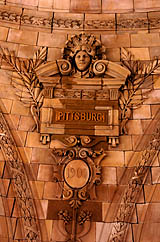 |
Watch Japan’s goalkeeper Ayumi Kaihori save
the ball during the final match, here. |
I spent most of the afternoon at a local establishment watching the thrilling final game of the Women’s World Cup between the U.S. and Japan. How utterly heartbreaking it was to watch the reaction of some of the patrons there upon the loss by the U.S. team. With their “us versus them” outlook and middle finger retorts, they ultimately disgraced themselves while giving Americans — as well as all men — a bad name with their poor sportsmanship and misogynistic attitude.
. . .
Please take a few moments to read the expertly written post by Ray Curren;
Women’s World Cup – Things We Learned: Final Edition As Japan Is Crowned on the women’s soccer fan site
All White Kit (AWK):
“The rules of athletics (at least knockout style) dictate that there has to be a winner and there has to be a loser.
Expert commentary, I know.
But (and I realize not everyone reading this is a United States fan, and I love that about AWK, so keep visiting) if you can take yourself out of your rooting shoes (or jersey) for a second and take the game you watched on Sunday for what it was.
A brilliant advertisement for women’s soccer, which saw the best the game has to offer. An underdog that everyone could root for, coming off an unspeakable tragedy in their home country, playing an attractive style of soccer, and exuding pure class and sportsmanship at just about every turn.
Of course, the rub is that this great story of Japan comes at the expense of the U.S., who lost the game in heartbreaking fashion, leading both in normal time and extra time before losing in penalties. It’s hard to imagine losing in a more painful fashion, actually.
But, perhaps the biggest lesson I try to get across to both the players I coach and students I teach is the ‘put yourself in someone else’s shoes’ lesson.
Can you be happy for someone else even if it comes at your expense? Can you put aside your pride to congratulate an opponent or adversary on a job well done?…”
Read the rest of this well written post here.
 Spotted on the trip back from Pittsburgh. I understand that they think the name “uppercase living” set in lower case letters is cute, but it it is jarring when trying to make sense of the phrase, and understanding the history behind what uppercase and lowercase means in typographic terms. This business is just one of the many other pyramid-type-schemes to make money off of others holding vinyl ‘decor’ parties.
Spotted on the trip back from Pittsburgh. I understand that they think the name “uppercase living” set in lower case letters is cute, but it it is jarring when trying to make sense of the phrase, and understanding the history behind what uppercase and lowercase means in typographic terms. This business is just one of the many other pyramid-type-schemes to make money off of others holding vinyl ‘decor’ parties.
















































